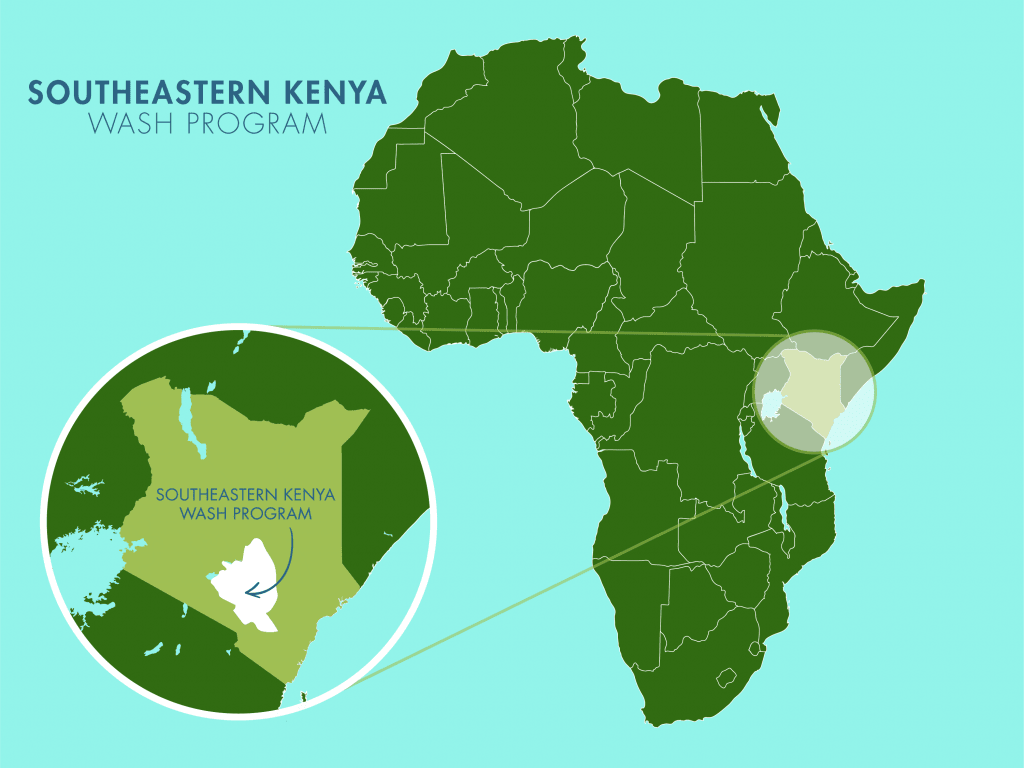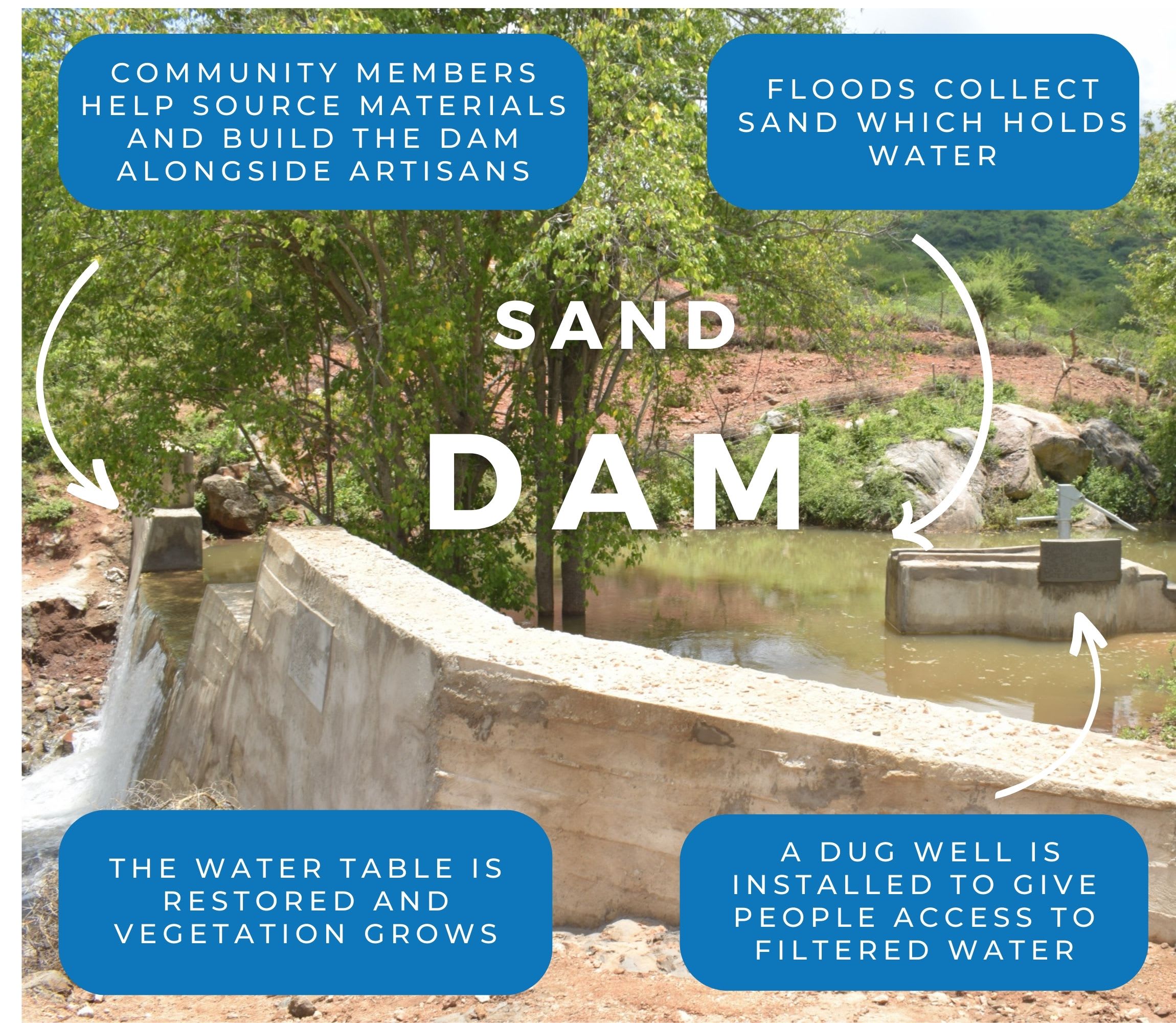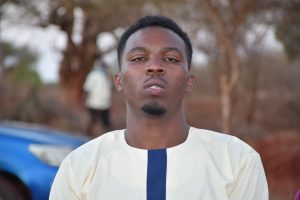The Katwenye Community, home to 1,238 people, urgently needs a reliable, safe, and accessible source of water. Currently, residents rely on scoop holes dug into a distant dry riverbed to meet their daily needs — an exhausting and unsafe method that provides only limited amounts of poor-quality water.
Each trip to fetch water takes at least two hours over harsh, dry, and rocky terrain. Even after this challenging journey, the water they collect often smells and tastes unpleasant, posing serious risks of waterborne diseases. This daily struggle robs the community not only of time and energy but also of their health and opportunities to make progress in their daily life.

Field Officer Alex Koech shared his perspective: "The scoop hole is located far away, forcing residents to spend about three hours daily to fetch water, which leaves little time and effort to focus on crucial chores like herding livestock, preparing their farms, or conducting hygiene duties. Apart from being contaminated and exposing residents to waterborne diseases like dysentery and typhoid, treating these infections is costly because of the meager income acquired from drought-struck farms or livestock."
"The children in the community perform poorly in school because of absenteeism caused by water-related maladies or lack of school fees. It is hard for them to focus in school because they spend most of their evenings, weekends, and holidays helping their parents to fetch water. The scoop hole cannot provide enough water for irrigating farms, which has also contributed to food insecurity," Alex continued.

Dennis Kimanzi.
Dennis Kimanzi, a 29-year-old farmer in the community, faces the threat every day.
"I’m deeply concerned about the safety of our current water source because the scoop hole we rely on is open and unprotected. It’s exposed to contamination from animal waste, wind-blown debris, and human activity. During the dry season, when water levels are low, the risk of contamination becomes even higher. Many in our community, including children, have fallen sick from waterborne illnesses like typhoid and dysentery. It’s heartbreaking to see people suffer simply because the only water we have is unsafe," Dennis said.
"The scoop hole is seasonal—it depends on rainfall to replenish. During the drought months, the water dries up or gets so low that it takes hours to collect even a small amount. The location is also far from most homes, and the overcrowding during peak dry periods worsens the situation. We often have to queue for hours, and the limited water available can’t serve everyone’s needs," Dennis continued.

Dennis collects water from the scoop hole.
"To me, water truly is life. Without it, we can’t farm, feed our livestock, clean our homes, or even stay healthy. It affects everything—our food, our health, our income, and our children’s future. When we have enough clean water, we can focus on building our lives instead of just surviving. Reliable water gives us hope, dignity, and the power to transform our community," said Dennis.
Dennis is clear that the water crisis he confronts daily limits the progress he can make in his daily life for himself and his family, even though he wants them to thrive rather than merely survive. But there is hope.

"By providing a reliable and nearby source of clean water, the community will no longer have to rely on the distant, seasonal, and contaminated scoop hole. This will save residents the 3+ hours spent daily on water collection, allowing them to redirect their time and energy toward vital activities like farming, livestock care, and maintaining hygiene," Field Officer Alex said.
Solving the water crisis in this community will require a multifaceted system that will work together to create a sustainable water source that will serve this community for years to come.
Steps Toward a Solution
Our technical experts worked with the local community to identify the most effective solution to their water crisis. Together, they decided to construct a sand dam and a protected dug well.
Sand Dam
Sand dams are sought-after, climate-smart, and lasting water solutions providing hope and resilience to communities in arid Southeastern Kenya. Think of them like giant sandboxes constructed in seasonal rivers that would typically quickly dry up after the rainy season. Instead of holding water like traditional dams, they collect sand and silt.
When infrequent rains do come, these dams catch a percentage of the river's flow, letting most of the water continue downstream to other communities. But here's the magic: the sand they collect acts like a natural filter, holding onto water long after the river's gone dry. Then, wells are constructed nearby, creating a reliable water source even during the driest times.
And the benefits don't stop there! In communities impacted by climate change, sand dams replenish groundwater and prevent soil erosion. Even during severe droughts, the consistent water supply from these sand dams allows farmers to thrive, giving way for enough food not only for their families but also to sell in local markets.
The most remarkable aspect of sand dams is how they involve the local community every step of the way, giving them a sense of ownership and pride in solving their own water shortage and managing their own water resources.
This sand dam will be connected to a protected dug well to make the water more accessible.
Community Education & Ownership
Hygiene and sanitation training are integral to our water projects. Training is tailored to each community's specific needs and includes key topics such as proper water handling, improved hygiene practices, disease transmission prevention, and care of the new water point. Safe water and improved hygiene habits foster a healthier future for everyone in the community.
Encouraged and supported by our team's guidance, the community elects a water user committee representative of its diverse members. This committee assumes responsibility for maintaining the water point, organizing community efforts, and gathering fees to ensure its upkeep.

 Sand Dam
Sand Dam
 Rehabilitation Project
Rehabilitation Project


















